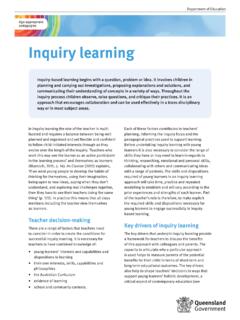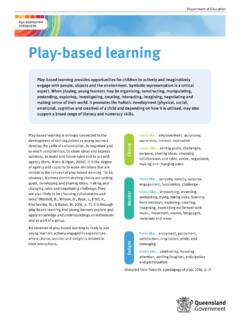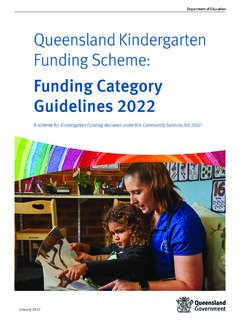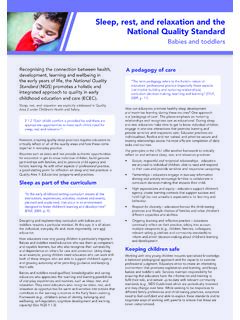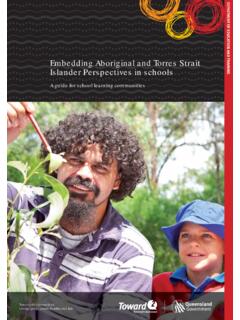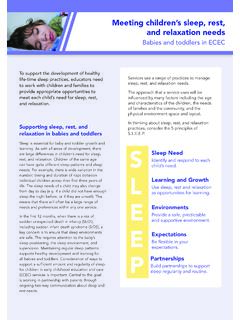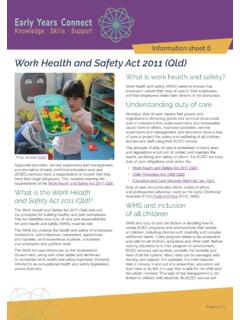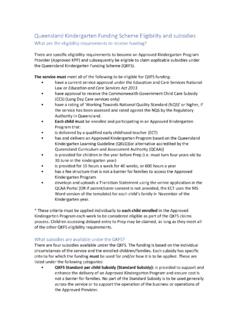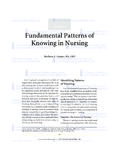Transcription of Direct teaching/instruction
1 Age-appropriate pedagogies: Event-based approach 1 Direct teaching/instruction is a term often used interchangeably with explicit teaching and can be misconstrued to mean a didactic or rigid approach to teaching (Fisher, Frey and Hattie, 2016). In the context of early childhood classrooms it is an effective approach when used for short periods of time to teach specific skills, for example letter/sound knowledge as a key component of learning to read, a skill necessary for all aspects of learning. The role of the teacher in Direct teaching/instruction is predetermined and specific with the teacher introducing factual information or skills through teacher initiated processes and decision-makingWhen selecting the approach of Direct teaching/instruction teachers consider: young learners interests and capabilities their own interest, skills, capabilities and philosophies the Australian curriculum evidence of learning school and community teaching/instruction is also intended to introduce new skill sets and knowledge that young learners acquire, replicate and with practise, transfer to new learning situations.
2 When implementing this approach teachers make decisions in relation to the: scope and sequence of lessons to build skills, for example, the introduction of a school-based social skills program organisational context including ability grouping, and whole class, small groups or individual instruction selection of resource materials including charts, props, rhymes, auditory cues choice of instructional language used to identify the goals of the session and each step in the sequence of activities introduction of Direct instruction within a unit of work for example, when a specific skill may be needed to undertake the next phase in an investigation and the frequency of practise necessary to master the teaching/instruction is a step-by-step, lesson by lesson approach to teaching which is scripted and follows a pre-determined skill acquisition sequence.
3 The aim of using Direct teaching/instruction is to take local variation and teacher/child idiosyncrasy out of instruction (Luke, 2014) and for young learners to learn through imitation. It is also used as a general term for the teaching of skills by telling or demonstrating. It is a common approach used for the teaching of handwriting, as well as phonics, letters and numerals. Direct teaching/instructionAge-appropriate pedagogiesAge-appropriate pedagogies: Direct teaching/instruction 2 Key drivers of Direct teaching/instructionThe key drivers that underpin Direct teaching/instruction provide a framework for teachers to discuss the benefits of this approach with colleagues and parents. The capacity to articulate why a particular approach is used helps to reassure parents of the potential benefits for their child in terms of short-term and long-term educational outcomes.
4 The key drivers also help to shape teachers decisions in ways that support young learners holistic development, a critical aspect of contemporary education (see Age-appropriate pedagogies for the early years of schooling: Foundation paper). Age-appropriate pedagogies for the early years of schooling: Foundation paper). Direct teaching/instruction is based on view that taking a structured, sequenced approach to teaching content and processes enables all young learners to learn new skills. This pedagogical approach is considered a time efficient and effective process for assisting young learners to master new skills and with mastery apply those skills to new learning : The lesson is teacher-initiated and the locus of control remains with the teacher throughout the is explicit: The learning experience has a clearly stated purpose and the lesson is sequenced with a set of steps to follow that are explained to young learners.
5 Time: Lessons are short with a concentrated focus on skill : Feedback is immediate and specific to ensure mastery of : Factual, content-driven skills are taught systematically with the intent that skills and knowledge are reproduced in other contexts as skills are mastered. What skills do young learners need to engage in Direct teaching/instruction ?To participate effectively in Direct teaching/instruction sessions young learners need to be able to: understand and follow instructions focus attention on task requirements respond to teacher- directed questions demonstrate self -regulation skills for example, persist when faced with the challenges of learning new skills draw on visual and auditory memory for example, when learning to form letter shapes young learners may draw on existing knowledge of the shape of a letter and the auditory cues provided by the teacher about how to form the correct letter shape understand the difference between individual learning experiences that are self -paced and directed , and group learning situations where the individual works and responds as part of a Direct teaching/instruction in the classroomAs one of seven age-appropriate approaches, Direct teaching/instruction is most commonly associated with the teaching of specific skills.
6 This approach may be used in whole class contexts and small groups, to teach skills within a specific unit of work related to the Australian Curriculum to support general the early years of schooling Direct teaching/instruction may be evident when teaching young learners the routines and expectations for classroom participation. In the first example of Direct teaching/instruction , handwashing routines are connected to Australian Curriculum health and physical education learning area and to personal and social pedagogies: Direct teaching/instruction 3 Handwashing routines (beginning of Prep)StepTeacher ActionLearners ResponseIntroductory discussionShort discussion/questions about the importance of hygieneRespond to questionsFocus activity handwashing rhymeIntroduce the rhyme and repeat Choral response from classModel Model the steps involved with specific language1.
7 First turn the tap on and wet your hands2. Next, press once for the soap3. Then wash on the front, on the back and in between4. Now turn the tap and rinse your hands5. Shake and dryObserve and listenRegular practiseProvide daily opportunities to practise skills and use rhyme as an auditory cuePerform handwashing routine while being monitoredAustralian Curriculum Health and Physical Education Strand: Personal, Social and Community HealthContent Description: identify actions that promote health, safety and wellbeing ACPPS006 Substrand Description: Contributing to healthy and active communities-Elaboration: understanding the importance of personal hygiene practices, including hand washing, face washing, nose blowing and toilet the second example of Direct teaching/instruction , the handwriting lesson is connected to the Australian Curriculum English learning texts (Prep)
8 StepTeacher ActionLearners ResponseIntroductory finger rhyme exercisesEngage whole class in finger rhymes to exercise hands in preparation for handwriting lessonJoin in familiar finger rhymesSpecific handwriting rhymeUse rhyme as an auditory cueing device Choral response from classModelModel the formation of a letter on whiteboardObserve and listenGuided instructionProvide scaffolds for young learners using specific language about where to start, the direction for the letter formation and where to stopPerform handwriting activity while being monitoredFeedbackObserve handwriting attempts and provide specific feedback about each young learner s attemptsObserve and listenAge-appropriate pedagogies: Direct teaching/instruction 4 Independent learningEncourage young learners to produce text as part of daily routines small group activities across learning areas, in routines (sign in) and authentic writing for a purpose (invitation, card)Apply new skills for example, to make a sign, print name, write a message, write a story Identify and use resources such as alphabet charts to support independent writingAustralian Curriculum EnglishStrand: LiteracySubstrand: Creating textsContent Description: Produce some lower case and upper case letters using learned letter formationsElaborations: adopting correct posture and pencil grip learning to produce simple handwriting movements following clear demonstrations of how to construct each letter (for example where to start.)
9 Which direction to write) learning to construct lower case letters and to combine these into words learning to construct some upper case helps teachers to identify how their decisions influence the breadth, depth and quality of educational opportunities which young learners experience, the learning that is occurring, and how achievement standards are being met. Teacher self -reflection on understanding of Direct teaching/instruction In which learning areas, and to what extent, do I Direct content, activities and lesson pacing? For what purpose do I use pre-planned sequences of content and activities (fixed, linear and incremental)? Which behaviouristic learning principles do I employ (getting children s attention, reinforcing correct responses, providing corrective feedback, practising correct responses)? What data informs the ability/achievement groups that I use?
10 In what ways does my planning demonstrate a strong understanding of the Australian Curriculum learning area/s and associated achievement standard/s that underpin this approach?
